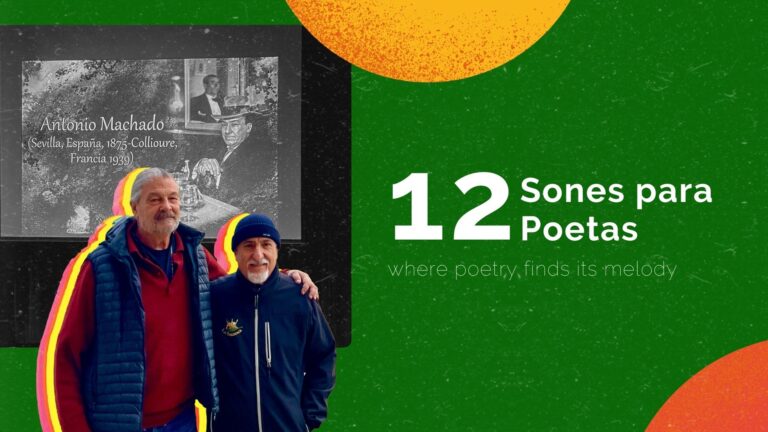Several College of Arts & Letters students earned first-place awards for their presentations at the 2023 University Undergraduate Research and Arts Forum (UURAF). The 25th UURAF at Michigan State University, which was held April 14 at the Breslin Student Events Center and online at Symposium, featured the research and creative endeavors of nearly 900 undergraduate students from 14 different colleges. Altogether, there were 633 presentations in 34 different subject areas. The student researchers were mentored by more than 500 faculty, staff, post-doctoral fellows, graduate students, and industry partners.

The first-place award winners from the College of Arts & Letters include:
- Amina Darabie, senior Arabic, Experience Architecture, and Interdisciplinary Studies-Liberal Studies triple major
- Bailey Griffin, sophomore African American and African Studies and Interdisciplinary Studies-Liberal Studies double major
- Kaitlyn Kwon, senior Graphic Design major
- Laine Lord, junior Art History and Visual Culture major
- Hannah MacDonald, senior Spanish major
- Emily Paterson, junior Experience Architecture and Professional and Public Writing double major
- Angie Petterson, senior Apparel and Textile Design major
- Nel Robinson, junior African American and African Studies and Political Science double major
- Emelia Rush, senior Graphic Design major
The following gives more information about these first-place award winners and their research:
Amina Darabie
Amina Darabie’s award-winning poster presentation, titled Documenting Barrier and Benefits in Lansing’s Farmers’ Markets, explored the benefits and challenges of local farmers’ markets. Darabie collaborated with Ari Andres, Interdisciplinary Studies-Liberal Studies major, and was mentored by Eddie Boucher, Assistant Professor in the College of Social Science.
“Each farmers market becomes a culture in and of itself, and this established culture is not always open to diversity, equity, and inclusion around the areas of socio-economic, cultural, and ethnic pluralism – creating a barrier of access or participation and often to the very people who could most benefit by the local and nutrient-rich produce that is generally available at farmers markets,” Darabie and Andres wrote.
The final documentary film explores this research through a focus on food accessibility and the experience architecture of market spaces.
Bailey Griffin
Mentored by Walter Hawthorne, Associate Professor in the College of Social Science, Bailey Griffin received a first-place award for her poster presentation, titled Death in Fairfax County, Virginia, in the Mid-19th Century: Morbidity and Enslaved and Free Populations, in which she used scans of death records from Fairfax County, Virginia, from 1854-1869, to measure morbidity and mortality disparities among racial groups, statuses (enslaved and free), genders, and age categories.
Griffin opened with a 1996 quote by bell hooks: “Within sexist racist iconography, black females are most often represented as mammies, whores, or sluts. Caretakers whose bodies and beings are empty vessels to be filled with the needs of others. This imagery tells the world that the black female is born to serve — a servant maid — made to order. She is not herself but always what someone else wants her to be.”
“It was established in 1662 under the Virginia law of partus sequitur ventrem or ‘offspring follows belly’ (Morgan, 2015) that a child of any enslaved woman was enslaved themselves, and many other Southern colonies modeled this legislation,” Griffin said. “These laws resulted in enslavers viewing their enslaved women as a product of free labor and a source for the reproduction of free labor. The construct of Motherhood has historically been identified under Western heteronormative ideologies as nurturing infants and children while living a domestic lifestyle, recognizing the maternal responsibility to lie exclusively with the biological mother (West, 2019). This narrative completely ignores mothering as it pertains to the unpaid and forced labor that Black women performed while enslaved in the United States and the larger Atlantic world. The narrative also sets up the stereotypical depictions of Black mothering that is still present in today’s culture (welfare queen, teen mother, baby mama, etc.) and support bell hooks analysis of societal views of Black women.
“A qualitative analysis of the data supports the accuracy of scholar Moya Bailey’s term misogynoir, defined as a hatred exclusively directed at Black women. Misogynoir began to form long before a term was created to identify the dehumanizing cruelties exclusively reserved for the oppression of Black women. Misogynoir explores the intersectionality of anti-Blackness and misogyny that structure mainstream ideas and representations of Black women and uphold the stereotypical depictions that deepen the oppression of Black women. The transparent bias in the data is an example of misogynoir. The white supremacist views on motherhood and mothering perpetuate the inaccuracies of Black motherhood and continue to villainize Black women.”
Hannah MacDonald
Hannah MacDonald received a first-place award for her poster presentation, titled Bilingualism and Its Affect Voice Onset Time in English Productions. Her mentor for the project was Lady Catherine Cantor Cutiva, Academic Specialist in the Department of Communicative Sciences and Disorders.

MacDonald used Praat software to calculate the Voice Onset Time (VOT) between bilingual English-Spanish speakers whose first language is English with those whose first language is Spanish.
“Bilingualism and native language are important factors that can affect voice onset time,” MacDonald concluded. “This is an important consideration, as the United States has a large population of Spanish-English bilingual speakers.”
Emily Paterson and Kaitlyn Kwon
Emily Paterson and Kaitlyn Kwon worked together on the first-place award-winning poster presentation, titled Street Teams x The Constellation Cat Café. They collaborated with Grace Cyporyn, Mariana Santos Bittencourt de Almeida, Mia Burghardt, Nicoline Bradford, Steph Ferrara, and were mentored by JeanaDee Allen, Academic Specialist in the College of Communication Arts and Sciences, and Madelyn Darbonne, M.A. in Journalism student.

“Over the course of the Fall 2022 and Spring 2023 semesters, our team of students (Team Bloom) worked with the Constellation Cat Cafe to effectively achieve a list of deliverables determined by a creative brief created by our team,” the students wrote. “Our team is currently working to create a brand guide, social media strategy guide, new pet information template, advertisement campaign for the cafe’s recent relocation, and an assortment of new merchandise such as stickers and pins for the cafe.”
Nel Robinson
Nel Robinson won a first-place award for their work on the poster presentation, titled Television News and the (Mis)Representation of Cocaine and Opioid Users: A Systematic Study of NBC Nightly News Reports, with Jerome Hamilton and Josie Danielkiewicz. The students were mentored by John Waller, Associate Professor in the College of Social Science.
The project explores depictions of opioid users in media compared to that of cocaine users (particularly in the form of crack) in the 1980s.
“The modern users of opioids, especially drugs like OxyContin® or synthetic opioids such as fentanyl, are widely said to be characterized as the unfortunate victims of a public health crisis while the users of cocaine in the 1980s were demonized as dangerous criminals who warranted harsh policing and incarceration,” the group wrote. “This project seeks to ascertain whether or not there is a factual basis for this widespread perception. We also evaluate the hypothesis that a differential framing of drug use can be at least partially explained by the association of cocaine use with African Americans in the 1980s and the association of opioid misuse with whites in the present.”
The group proved that “a) depictions of cocaine use in the 1980s were significantly more negative and condemnatory than those of opioids in the 2010s; (b) Black use of cocaine in the 1980s was grossly exaggerated; and (c) the lack of sympathy for cocaine users expressed by NBC in the 1980s is to come extent explicable in terms of pervasive racist attitudes.”
Laine Lord and Angie Petterson
In their poster presentation, The Archive of Malian Photography, Laine Lord and Angie Petterson worked to digitize, catalog, preserve, and make internationally accessible the archives of five of Mali’s most important photographers. MATRIX has archived and shared approximately 100,000 of the most historically and culturally significant negatives and original prints dating from the 1940s to the present.
They were mentored by Candace Keller, Associate Professor in the Department of Art, Art History, and Design.
Emelia Rush
In her soft sculpture, She Wears It Well, Emelia Rush examines attitudes about women’s bodies and the pressures for women and girls involved in the virtuoso dance world to conform to an ideal of perfection and beauty.
Using a leotard as a stand-in for self, Rush used embroidery, beading, and sequinning to adorn the body suit. Drawing with her needle, the construction of the piece is reflective and celebratory of the affirmative aspects of dance, while also examining some of the negatives that can accompany intense athletic activity.

Using finished needlework on the outside of the sewn piece, the inside is reflective of the private, interior psyche. In relation to the soft exterior, the lining of fixed cross-stitch fabric is a metaphor of the rigid day-to-day of a perfectionist to gain a sense of control. The chaotic, tangled threads are intended to further symbolize the detrimental effects of these standards.
The work equates ballet, art, and perfectionism. Through extensive research, Rush investigates the connection between the undermining of women’s art — particularly art that uses craft materials or techniques — and the unattainable standards by which women are negatively judged.


